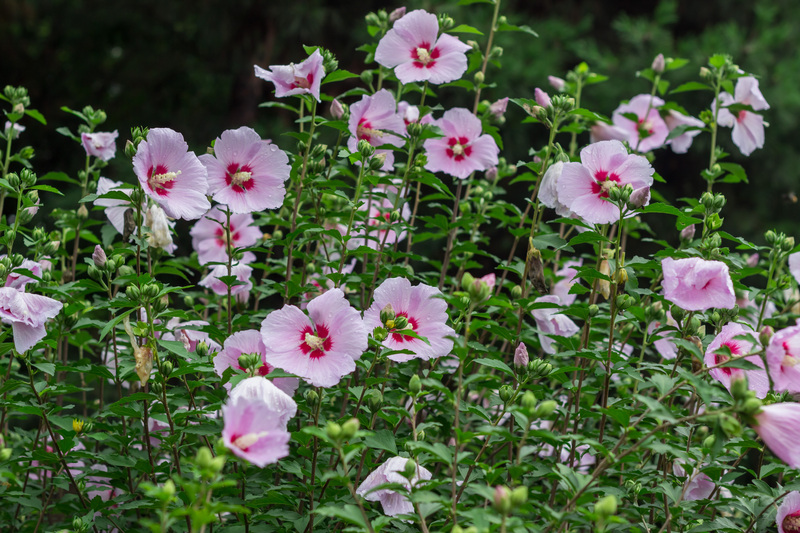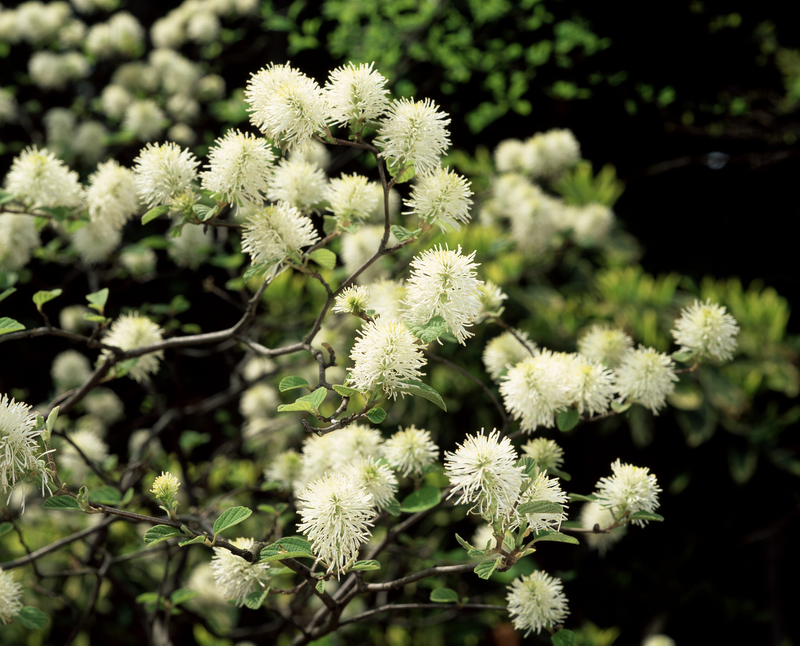Frugal Gardening: 5 Easy-Care Ideas to Transform Your Space on a Dime
Posted on 29/06/2025
Frugal Gardening: 5 Easy-Care Ideas to Transform Your Space on a Dime
Dreaming of a beautiful, lush garden but worried about expenses or maintenance? Frugal gardening is the answer! With the right approach, you can cultivate a vibrant outdoor space that's both affordable and low upkeep. This comprehensive guide showcases five easy and cost-effective gardening ideas to spruce up your yard, patio, or balcony on a tight budget--while making gardening accessible and enjoyable for everyone.
Why Choose Frugal Gardening?
Many people believe a stunning garden requires a hefty investment in plants, tools, and landscaping. However, frugal gardening is all about maximizing what you have, finding creative solutions, and saving money without sacrificing beauty. Whether you're a beginner or experienced gardener, adopting cost-conscious strategies lets you:
- Cut costs on plants, soil, and tools
- Reduce garden maintenance time and effort
- Increase sustainability by recycling and upcycling materials
- Enjoy the mental and physical rewards of gardening
Ready to dig in? Let's explore five smart, thrifty gardening ideas that yield both beauty and value.

1. Start with Free Plants and Seeds
Reap Big Savings by Sourcing Plants Wisely
Why spend a fortune on nursery plants when you can get them for free? One of the tenets of budget gardening is to acquire plants without splurging. Here's how:
- Propagate from Existing Plants: Many herbs, succulents, and perennials can be propagated from cuttings, division, or even root offshoots. If you already have a plant, try multiplying it. Even asking friends or neighbors for cuttings is a fantastic way to start.
- Join Seed Swaps or Exchanges: Many communities and online gardening groups hold seed swapping events, which are an excellent way to collect diverse seeds for free.
- Regrow Kitchen Scraps: Did you know you can regrow green onions, lettuce, and even potatoes from grocery store scraps? Place roots in soil or water and watch them sprout anew.
- Check Local 'Free' Listings: Websites like Craigslist and Facebook Marketplace often feature gardeners giving away excess plants, bulbs, or seeds.
Key Tip: Save seeds from annuals such as marigold, zinnia, and sunflowers each year. With minimal effort, you'll perpetuate your flower garden for seasons to come--at zero cost!
2. Use DIY Materials and Recycled Containers
Get Creative with Garden Solutions
Upcycling is the heart of frugal gardening practices. Not only does it save money, but it also reduces waste. With a little creativity, almost anything can become a fun, functional garden feature.
- Repurpose Old Items: Turn old boots, teapots, or drawers into quirky plant containers. Recycle buckets as planters or large tin cans for herbs and small veggies.
- Build Raised Beds from Pallets: Used shipping pallets--often available for free--can be transformed into raised garden beds or vertical gardens. Just make sure they're safe for use (look for 'HT' stamped pallets for 'heat-treated' wood).
- DIY Compost Bins: Skip expensive compost tumblers. Use plastic bins, trash cans, or even a simple corner of your yard to create rich compost from kitchen scraps and yard waste.
- Make Plant Markers: Save popsicle sticks, broken terracotta pieces, or old plastic utensils for handy, free plant labels.
Pro Tip: Line containers with coffee filters or mesh to prevent soil from washing out but still allow good drainage--no special equipment needed!
3. Embrace Low-Maintenance Plants
Beauty Meets Simplicity in Your Frugal Garden
Some plants demand less care, less water, and resist pests better than others. By focusing on low-maintenance plants, you significantly reduce gardening chores and expenses. Ideal choices include:
- Perennials: These plants return year after year--think lavender, daylilies, sedum, and echinacea. They require little replanting and often spread to fill in space.
- Drought-Tolerant Varieties: Succulents such as hens-and-chicks, sedum, or agave save on watering and thrive in poor soil conditions. Many native wildflowers also fit this category, attracting pollinators and requiring less intervention.
- Herbs: Mint, thyme, oregano, and chives are some of the easiest herbs to maintain, thriving with little attention.
- Self-Seeding Annuals: Flowers like cosmos, poppies, and calendula easily reseed themselves--meaning less work for you, season after season!
Choose regionally appropriate or native species whenever possible. They're better adapted to local climates, making them resilient against pests and environmental stresses, maximizing your gardening rewards with minimal expenditure.
4. Mulch for Free and Save Water
Smart Watering & Mulching = More Savings
Water bills can skyrocket during the gardening season, but mulching and smart watering can make a world of difference. The frugal gardener leverages these strategies to conserve both water and effort.
- Source Free Mulch Materials: Gather grass clippings, autumn leaves, pine needles, and wood chips for effective, no-cost mulch. Many municipal yards give away wood chips or compost for free.
- Re-use Cardboard and Newspaper: Lay cardboard or newspaper (free of colored ink) under your mulch layer to suppress weeds without chemical herbicides.
- Mulch Deeply: Apply mulch 2-3 inches deep around plants to retain moisture, regulate soil temperature, and stop weed growth--saving water and time.
- Collect Rainwater: Set up a rain barrel using a repurposed drum or bin under your gutter downspout. Use the harvested rainwater to hydrate your garden (great for plants and your wallet!).
Bonus: Mulching also improves soil health, leading to less need for commercial fertilizers in the long run--another frugal win!
5. Make Your Own Natural Fertilizer
Feed Your Garden without Breaking the Bank
Storebought fertilizers and chemicals can be pricey and potentially harmful to the environment. When it comes to frugal garden care, making your own natural plant food from common household and yard materials is both easy and highly effective.
- Compost Everything: Toss kitchen scraps, coffee grounds, eggshells, grass, and leaves into your compost pile. When broken down, this mixture yields rich, fertile compost packed with nutrients for your plants.
- Make Manure Tea: Soak a bag of aged manure (from cows, rabbits, or chickens; never dogs or cats) in a bucket of water for a few days. Use the resulting 'tea' to water and feed your garden--just be sure it's well-diluted.
- Use Banana Peels: Chop banana peels and bury them under rose bushes or tomato plants for a natural source of potassium.
- Create Eggshell Fertilizer: Crushed eggshells add calcium to tomatoes and peppers, preventing blossom end rot.
- Save Water from Cooking: Use cooled water from boiling eggs or vegetables as a nutrient-rich "drink" for your garden (skip this if salted).
Did you know? Adding homemade compost or fertilizers improves soil structure, increases beneficial microbes, and leads to healthier, more resilient plants--all for free!

Frugal Gardening in Small Spaces
No Yard? No Problem!
Frugal gardening techniques aren't limited to those with a backyard. Balcony, windowsill, or rooftop gardeners can also embrace these low-cost, low-labor approaches:
- Vertical Gardens: Use recycled pallets, hanging shoe organizers, or gutter gardens to maximize growing area in tight spots.
- Container Gardening: Upcycle buckets, baskets, or even tote bags into portable gardens for herbs, tomatoes, or salad greens.
- Community Plots: Many towns offer community garden plots for a fraction of the cost (or even free), often with shared tools and composting facilities.
- Window Boxes: Perfect for easy-care flowers or salad greens--just line them yourself and fill with repurposed soil mixes from your compost.
Extra Tips for a Truly Thrifty, Low-Care Garden
- Group Plants by Water Needs: Cut down on wasted water (and effort) by grouping thirsty plants together and drought-lovers apart.
- Practice Companion Planting: Some plants naturally deter pests or boost growth in others--think marigolds with tomatoes or basil near peppers. This approach reduces reliance on pesticides and fertilizers.
- Be Patient: Growing from seeds or cuttings is slower than buying full-grown plants, but it's infinitely more affordable and rewarding!
- Declutter Your Tools: Avoid buying specialized tools--most gardening tasks can be handled with a sturdy trowel, a spade, pruners, and gloves.
Conclusion: Transform Your Garden--And Your Budget!
Frugal gardening offers more than just savings--it opens up new opportunities for creativity, sustainability, and connection to nature. By following these five easy-care, cost-effective ideas, you can transform your garden space on a dime while keeping the process simple, enjoyable, and eco-friendly.
Whether you're propagating free plants, repurposing everyday items, choosing hassle-free varieties, conserving water, or mixing your own fertilizers, you'll discover gardening doesn't have to be expensive or difficult. With a frugal garden mindset, you'll reap beautiful, bountiful results that reflect your resourcefulness and care for the environment.
Ready to get started? Grab a trowel, think creatively, and let your budget-friendly gardening adventure begin. Your lush, inviting oasis is just a few DIY steps away!
Share Your Frugal Garden Success Stories!
Have you tried these thrifty gardening tips or have a cost-saving idea of your own? Share your experiences in the comments below! Let's inspire more outdoor beauty--on a budget.

